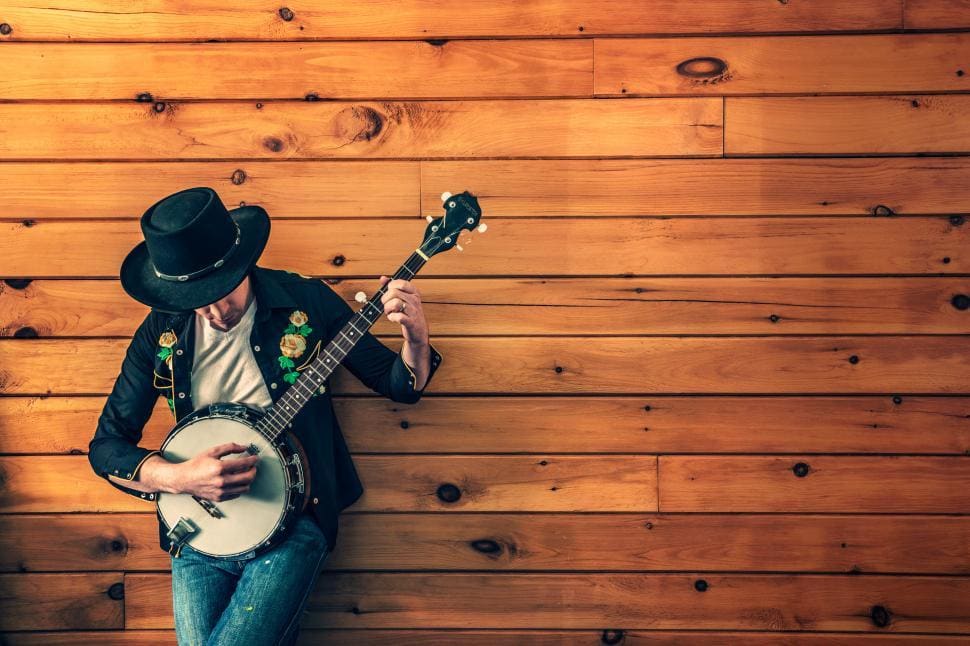There’s more to the banjo than you think….

If you’ve looked at the New Arrival menu on the www.sologuitars.com website, you will have seen our 3 new Banjo kits. Yeah, I know, we all class banjos as bluegrass or country instruments, and who really cares anyway, right? Well aside from bands like Led Zeppelin and The Grateful Dead having used banjos in their recordings, banjos have a colorful history that might change your mind on how musically important they are in the history of stringed instruments.
Banjos are not as old as guitars, but they do date back to the 1600’s. Banjo type instruments were used by enslaved people in the Caribbean and in the Americas, and it seems were derived from instruments used in West Africa called the Banjul. The origin of the name could also have come from the Portuguese Bandore or the Spanish Bandurria. They were originally made from split gourds with animal skins stretched across the opening and different strings (often made of gut) attached to a wooden neck extending from the gourd. There are many different instruments related from around the world as well, but our modern banjo finds it’s roots here, in the Caribbean and the Americas.
Banjos were easily made and could be learned and played by almost anyone. As such, their popularity grew through the 1700’s and turned into a movement in the later 1800’s called ‘the banjo craze’ or ‘banjo mania’. Due to its history, the banjo was seen as a low-class instrument because it was used so often in ‘black-face’ minstrel shows, medicine shows and vaudeville. There was a push to make the banjo ‘legitimate’ in the later 19th century, and it became more common and accepted to see the instrument in fashionable society and even in women’s parlors. The playing style also went from purely a stroke style to a finger style. The manufacture of these instruments also improved to include metal parts, exotic woods, raised frets and a tone ring that increased the tone and volume. They also produced banjos in a variety of sizes and pitch ranges to satisfy the latest trend of banjo orchestras.
At the end of the 1800’s and the beginning of the 1900’s, music had evolved to ragtime and then to jazz by about 1910. Banjos were now fully accepted and even required in ragtime bands and jazz bands. The instruments were ornate and quite loud, being the only stringed instrument aside from the upright bass that could cut through the sound and volume of the brass and reeds in these bands. Steel strings were now being used and the instruments were played with picks and finger picks to help increase that volume. In the mid 1920’s however, Gibson hired Loyd Lore to create a guitar which would be known as the ‘archtop guitar’, and with its increased volume and projection, began to replace the banjo in the jazz scene. The Great Depression all but killed the popularity of the banjo, and it wouldn’t be until the post WWII era that banjos started to be reborn.
Forever linked to American roots music, which took two different roads to folk and country, two musicians spearheaded to move back to the banjo. Earl Scruggs and Pete Seeger became famous both playing the banjo, and in fact, Pete Seeger wrote a book called ‘How To Play The 5 String Banjo’ which was the only method book for banjo for years. Since that time, the banjo has become fully ensconced in modern music, from roots, to folk, country to rock and even found some home with the hard-core punk scene. So whether you decide on the 4, 5 or 6 string kit that we are offering here at Solo Guitars, you can ignore your pals when they say ‘dude….a banjo? Really?’ You know you have an important historical instrument which is not only fun to play, but presents a whole new learning curve for your fingerstyle playing…something that will only benefit all your playing, and set you apart from your pals 😉 Check ‘em out…They aren’t beginner kits, but they are fun!


